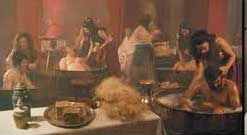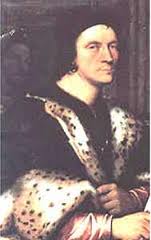Spanish Late Medieval Literature
The specific case of medieval Spain is both fascinating and exceptional insofar as the development of the Reconquista, following the collapse of the Caliphate of Cordoba towards 1031, lead to a complete turnaround in the fortune of the Christian kingdoms.

This reversal of fortune became highly lucrative for the ruling Christian monarchs, and soon enough the Reconquista would turn into something much closer to a commercial transaction than to a war. A commercial transaction that is closely linked with the development of a highly sophisticated society in medieval Spain.
Indeed, much like Charlemagne's Renovatio of the turn of the IX century, the level of erudition and refinement in the courts of medieval Spain during the XIII and into the XIV century was such, that some commentators speak of an early form of Renaissance, or ´Pre-Renaissance´when they refer to it.
In artistic terms, the conditions that had previously lead to the development of religious and epic tales, the two dominating literary strains in medieval Spain, remained pretty much in place throughout the XIV century. What we witness, then, is a further progression of trends that already existed.
The Book of Good Love
In this regard, The Book of Good Love, likely produced somewhere between 1330 and 1340, takes the precepts set by Gonzalo de Berceo in his Miracles of Our Lady and projects them forward, exploring new avenues in the genre of religious recitation, which reaches well beyond the realms of mere prayer through the impersonation of the narrator.

Written by Juan Ruiz, the Archpriest of Hita, a town located halfway between Madrid and Saragossa, The Book of Good Love ostensibly serves a simple purpose: to make the distinction between good (pious) and bad (carnal) Love, warning readers of the pitfalls that lie behind the latter and extolling the benefits inherent to the former.
The problem, however, is that Ruiz's narrative is substantially stronger when he deals with the complications that befall his character (apparently himself) due to his involvement with carnal Love. Thus, The Book of Good Love is far better known for its characterisation of Trotaconventos, a likeable go-between in his shameful escapades, than for the Marian verses that highlight the virtues of caste Love towards the end of the poem.
Which goes to show that, following the progress of the Reconquista, literary production in the Iberian peninsula during the first half of the XIV century reached its climax, exploiting the full potential of the conventions developed in the previous 300 years. Thus, if The Book of Good Love takes religious recitation to another level, the Tales of Count Lucanor will provide the example par excellence of exemplary literature.
Tales of Count Lucanor
Written by Don Juan Manuel, nephew to King Alfonso X, the Tales of Count Lucanor is more traditional in its structure than The Book of Good Love, even if it is more audacious in its form. The fictitious Count (Lucanor) repeatedly seeks advice from his counselor, Petronio, whose answer always comes in the form of an analogous situation (example) from which a lesson can be derived.

Similar in its framing structure to equivalent works in Europe (The Canterbury Tales, The Decameron), Don Juan Manuel is lees subversive in his message than many of his contemporaries. Nevertheless, his Tales of Count Lucanor remain the oldest work of fiction in prose in medieval Spain. A new trend had appeared in medieval Spain: the emergence of prose as an acceptable vehicle to narrate fictional tales.
The times were moving forward and soon enough an impasse would be reached in the progression of culture in the Iberian peninsula. The influence of Muslim petty kingdoms in the dying days of the Reconquista would no longer be so significant, and while a new form of sophistication, geared towards the rediscovery of ancient cultures, got a firm grip of cultural affairs all over the Italian peninsula, Spain would remain subsumed in the wake of its medievalism.
Thus, should you ever go to Spain and anyone tells you Spanish culture was insignificant prior to the Golden Age, you can always go back to the rich medieval heritage of the country, a heritage that has few rivals in the continent.
